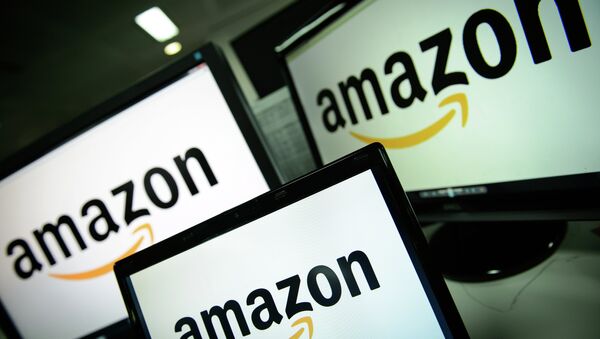With the rise of e-commerce in the US and elsewhere, such a significant increase seems to support the broader trend, however, a simultaneous decline in Amazon’s profits stemming from the rising costs of investment and reinvestment, stirs some anxiety even in the buoyant e-commerce segment.
Amazon posted a 25-percent annualised increase in their revenues in the second quarter, up to $38 bln, due to the rising consumer demand for their services, supported by the convenience of home delivery and return options. However, Amazon’s expansion into the new niches of consumer market dictated a necessity for an increased spending, rendering overall profits negative.
US e-commerce is doing slightly better, but the improvements in this segment have thus far failed to offset the broader negative trend for the US retail. The case with Amazon, involved into the zero-sum game with the agonising brick-and-mortar, has demonstrated that the rise in operational revenues has come at a cost of higher investment into expansion into the segments, once dominated by brick-and-mortar.
"Spending is always a concern with Amazon, but investors eventually give Amazon a pass because Amazon invests in growth opportunities,” Victor Anthony of New York-based Aegis Capital Corp. said.
US consumer demand, meanwhile, is held back by the high credit card debt (at about $14 trln), as well as higher borrowing costs, dearer mortgages and auto loans, as well as the student loan burden. The lack of gains in salaries and wages, and rising rents have also contributed to the decline in overall US retail.
For the first time in two years, Amazon is heading for a quarterly loss – a higher scale of operations that allowed them to boost revenues by 25 percent, required higher spending on additional warehouse and storage facilities, a nod to the dying brick-and-mortar retail. Even though Amazon is leading in the nascent smart-home market, supplying gadgets and smart appliances to the consumer, the delivery costs and related losses and liabilities are taking their toll on the company’s financial performance.
In May, US retail sales declined by 0.1 percent, and major US retailers such as Sears, are feeling the mounting pressure of the unfavourable finance conditions, coupled with tepid consumer turnout.
Amazon, on their part, are facing setbacks in the form of goods, damaged on their way to the consumer, and the high rate of returns. Besides, warehouses and overall logistics of Amazon are not that much different than those of traditional brock-and-mortar retailers, and Amazon is starting to face similar challenges.
The regulative burden, hampering the broader US economic expansion, also has played its role in limiting Amazon’s growth capabilities. The Trump administration, committed to deregulating the US economy, has thus far undertaken too little effort to improve the situation, as inferred from the Amazon Q2 earnings report.
"You tend to expect companies like this (Amazon) to grow their expenses at a slower rate than their revenues," Michael Pachter of Los Angeles-based Wedbush Securities said. "G&A (government and administrative costs) up 50 (percent) is crazy."
While US retail is under pressure of lower consumer demand and higher refi costs, driven by the higher Fed interest rates, the likely fall of Amazon might turn out to be quite as astonishing as its rapid rise. E-commerce, despite having gained some momentum, is still far from total dominance in the consumer market, and once, and if, it gets there, the complex warehouse and shipping logistics are only going to exacerbate the existing challenges to e-commerce, almost equalling their situation to that of brick-and-mortar at this point.





